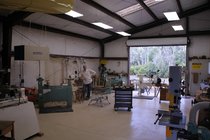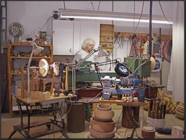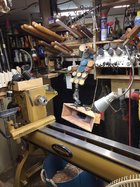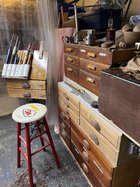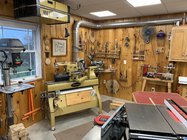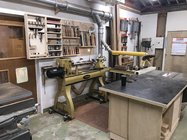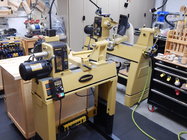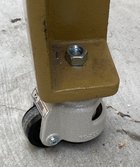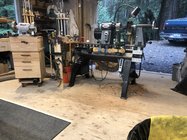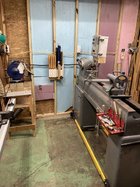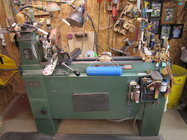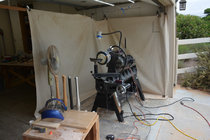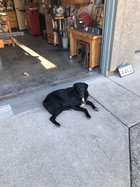I am about to make an addition to my “toolbox”…space. I am finally moving into the newly built shop, with four major tools left to move: the 36” band saw, the Delta 20” band saw, the jointer and the compressor. All of these are too large to move with the engine crane, and i am waiting for a shop gantry to be modified so that the move can be completed. So far, my lathe and stationary tools are just pushed against the walls.
For some weeks now, I have been fooling around with cut to scale footprints of my machines. All are on mobile bases or set up to be moved with a pallet jack, so the final floor plan will not necessarily be permanent. In the past, the shop was elbow to elbow and working often meant moving machines out to the driveway to use them. My lathe was parallel to and against the wall. I have no intentions of ever doing any videos in the shop.
To the topic of this post: Where have you located your lathe? Is it parallel to and against the wall? Is it perpendicular or diagonal to a wall? Is your lathe in the open floor space? Would anyone care to comment on the pros and cons of these arrangements?
Thanks.
For some weeks now, I have been fooling around with cut to scale footprints of my machines. All are on mobile bases or set up to be moved with a pallet jack, so the final floor plan will not necessarily be permanent. In the past, the shop was elbow to elbow and working often meant moving machines out to the driveway to use them. My lathe was parallel to and against the wall. I have no intentions of ever doing any videos in the shop.
To the topic of this post: Where have you located your lathe? Is it parallel to and against the wall? Is it perpendicular or diagonal to a wall? Is your lathe in the open floor space? Would anyone care to comment on the pros and cons of these arrangements?
Thanks.

